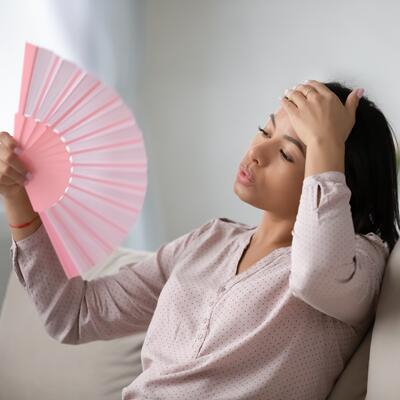Ariana Brocious: This is Climate One. I’m Ariana Brocious.
According to the National Energy Assistance Directors Association, one in seven households is behind on their energy bills. And when a utility decides to disconnect a household’s power supply, it can create a vicious cycle that is difficult for people to get out of.
I spoke with Sanya Carley, who co-directs the Energy Justice Lab at the University of Pennsylvania, about how to address the rising number of shutoffs. She explained what happens to a household when a shutoff occurs.
Sanya Carley: When somebody's disconnected, they may lose everything in their refrigerator, for example, they may face disconnection fees, they may lose their entire account, they may face reconnection fees, legal fees, just a variety of other expenses. Uh, it takes them a while to get back on their feet, and then they're already at a disadvantage for paying their next month's bill. These households then are also considered more risky and at more prone to being disconnected in the future, and thereby might be disconnected from their utility provider in the future if they can't recover and pay for their debt.
Ariana Brocious: Considered risky by the utility.
--
Ariana Brocious: So to avoid shutoffs, people do a number of things, and these can also be somewhat harmful in different ways. Can you explain what some of those are?
Sanya Carley: I will, and this is something that, that we focus quite a bit of effort on at the Energy Justice Lab are these financial and behavioral coping strategies. and the riskiest strategies are also the most common. So, for example, carrying debt, which is highly risky, is the, the leading, uh, coping strategy with 28% of all low income households. And the second most common strategy is what we term risky temperature behavior. Now this is behavior such as burning trash in your home or using your oven for space heat or using a dryer to warm one's body by sitting behind the dryer as it's running. But there are a variety of other strategies as well, such as keeping your home at incredibly uncomfortable temperatures, either too cold or too hot, or facing the decision of whether to put money towards food or to heat, uh, or other strategies that I think are less risky. But as noted, very much less common, uh, such as calling the utility for help and asking the utility if they have a payment plan, or asking a friend or a neighbor or a family member for help paying a bill.
--
Sanya Carley: LIHEAP as a, a federal bill assistance program is absolutely crucial in the face of energy insecurity and utility disconnections. This is a lifeline for millions of households across the country that need that kind of emergency relief in some month when their bills just, they simply can't cover their bills. But we know that LIHEAP actually at. Uh, previous funding levels, which are usually about 4 billion to 6 billion in some of the best years, were already woefully inadequate. At best estimates are about 20% of the eligible at need population for this bill assistance program actually had access to
Ariana Brocious: Just a fifth of people who really need it.
Sanya Carley: That's right. That's right. I'll also note that there's seasonality here too. If we're thinking about extreme heat, the majority of the funds for LIHEAP are used in the cold weather months because that's when it's first allocated, and the best estimate that I've heard is about 70% is already used before the summertime, so there's just a small kind of paucity of funds. In some places. It's entirely exhausted before the summer months, before the extreme heat.
--

